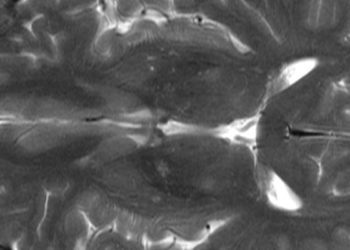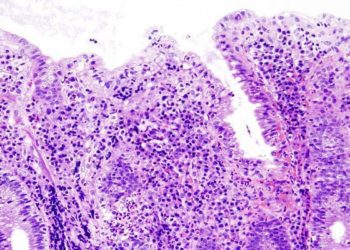Deep intronic FGF14 repeat expansion associated with late-onset cerebella ataxia
1. A dominant deep-intron GAA repeat expansion in the FGF14 gene was found among French Canadian patients with late-onset cerebellar ataxia (LOCA).
2. This candidate pathologic marker was found to reduce expression of the FGF14 gene product, fibroblast growth factor 14 (FGF14), in cerebellar tissue and motor neurons.
Evidence Rating Level: 2 (Good)
Study Rundown: LOCAs are a diverse group of neurodegenerative diseases that present as progressive ataxic syndrome with onset in late adulthood. LOCAs are rare and genetic testing thus far has yielded high false negative rates. This could be due to the inconsistent capabilities of standard genetic sequencing techniques in detecting certain variations, such as tandem repeat expansions. The current study investigated the use of long-read nanopore sequencing and specialized software to detect repeat expansions in the FGF4 gene among six French Canadian LOCA patients. A pathologic threshold of 250 repeats or greater of the GAA sequence deep within the first intron was found. This candidate genetic marker was found to be associated with heightened risk of LOCA in the subsequent case-control study in French Canadian and German patients. Furthermore, assays of post-mortem cerebellar tissue and motor neurons derived from patients’ induced pluripotent stem cells (iPSC) revealed lower transcription and expression of FGF14. The study demonstrated that the GAA repeat expansion in the first intron of FGF14 was associated with LOCA and highlighted the importance of examining non-coding regions when investigating neurodegenerative diseases.
Click to read the study in NEJM
In-Depth [case-control study]: This multi-design, multi-phase study was a discovery genetic analysis of confirmed French Canadian LOCA patients. A set of case-control association studies, and a subsequent laboratory functional assay to examine the association of the intronic GAA repeat expansion in the FGF14 gene with LOCA. Patients who had progressive ataxia with onset at or after the age of 30 years, without features of multi-system atrophy, acquired disease, or positive results on genetic screening for known ataxic disorders, were eligible for inclusion. Six French Canadian patients with autosomal dominant LOCA were studied in the discovery phase. The FGF14 repeat locus was found as a candidate marker when comparing the genomes of these patients with a control population. This region was then amplified using polymerase chain reaction and sequenced by long-read nanopore technology. A GAA repeat expansion deep within the first intron of FGF14 was identified as the pathogenic variant, with the threshold of at least 250 repeats ([GAA]≥250). Subsequently, two association studies were conducted among French Canadian (66 patients and 209 controls) and German (228 patients and 199 controls) cohorts. The FGF14 [GAA]≥250 expansion was strongly associated LOCA. The odds ratio was 105.60 in the French Canadian cohort (95% Confidence Interval [CI], 31.09 to 334.20; p<0.001) and 8.76 in the German cohort (95% CI, 3.45 to 20.84; p<0.001). Additionally, the FGF14 [GAA]≥250 expansion was found in 61%, 18%, 15% and 10% of the French Canadian, German, Australian, and Indian cohorts of index patients, respectively. Lastly, a functional analysis was carried out in post-mortem tissue from iPSC lines created from European LOCA patients and controls. In both assays, the FGF14 [GAA]≥250 expansion was demonstrated to result in lower expression of both the FGF14 RNA and its gene product, FGF14 when compared to non-pathologic controls. Overall, these results demonstrated that the dominant GAA repeat expansion in the intron of FGF14 was associated with LOCA.
Image: PD
©2023 2 Minute Medicine, Inc. All rights reserved. No works may be reproduced without expressed written consent from 2 Minute Medicine, Inc. Inquire about licensing here. No article should be construed as medical advice and is not intended as such by the authors or by 2 Minute Medicine, Inc.








